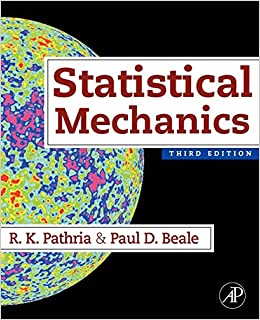Establish the asymptotic formula (11.7.30) for the function (Fleft(z_{0}ight)). [Write the coefficient that appears in the sum
Question:
Establish the asymptotic formula (11.7.30) for the function \(F\left(z_{0}ight)\).
[Write the coefficient that appears in the sum (11.7.24) in the form
\[
\begin{aligned}
& \frac{1}{\sqrt{ }(r s t)(r+s)(r+t)} \\
& =\left(\frac{2}{\sqrt{ } \pi}ight)^{3} \int_{0}^{\infty} e^{-X^{2} r-Y^{2} s-Z^{2} t-\xi(r+s)-\eta(r+t)} d X d Y d Z d \xi d \eta
\end{aligned}
\]
Insert this expression into (11.7.24) and carry out summations over \(r, s\), and \(t\), with the result
\[
F\left(z_{0}ight)=\frac{8}{\pi^{3 / 2}} \int_{0}^{\infty} \frac{1}{z_{0}^{-1} e^{X^{2}+\xi+\eta}+1} \frac{1}{z_{0}^{-1} e^{Y^{2}+\xi}+1} \frac{1}{z_{0}^{-1} e^{Z^{2}+\eta}+1} d X d Y d Z d \xi d \eta
\]
In the limit \(z_{0} ightarrow \infty\), the integrand is essentially equal to 1 in the region \(R\) defined by
\[
X^{2}+\xi+\eta<\ln z_{0}, \quad Y^{2}+\xi<\ln z_{0}, \quad \text { and } \quad Z^{2}+\eta<\ln z_{0}
\]
outside this region, it is essentially 0 . Hence, the dominant term of the asymptotic expansion is
\[
\frac{8}{\pi^{3 / 2}} \int_{R} 1 \cdot d X d Y d Z d \xi d \eta
\]
which, in turn, reduces to the double integral
\[
\frac{8}{\pi^{3 / 2}} \iint\left(\ln z_{0}-\xi-\etaight)^{1 / 2}\left(\ln z_{0}-\xiight)^{1 / 2}\left(\ln z_{0}-\etaight)^{1 / 2} d \xi d \eta
\]
the limits of integration here are such that not only \(\xi<\left(\ln z_{0}ight)\) and \(\eta<\left(\ln z_{0}ight)\), but also \((\xi+\eta)<\left(\ln z_{0}ight)\). The rest of the calculation is straightforward.]
Step by Step Answer:






